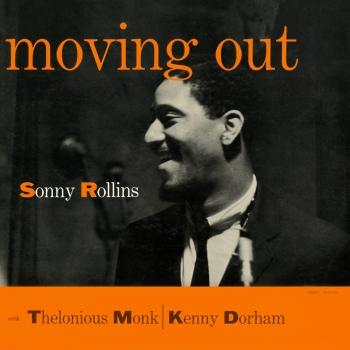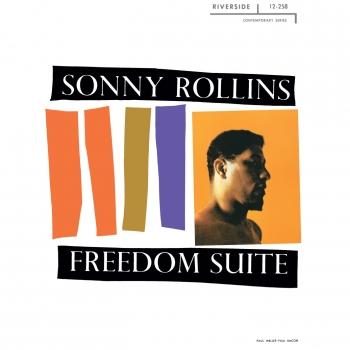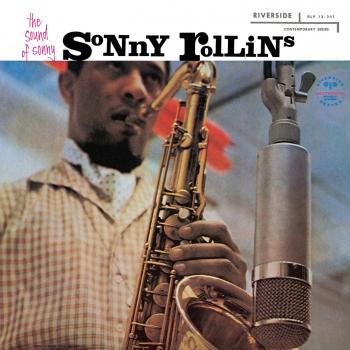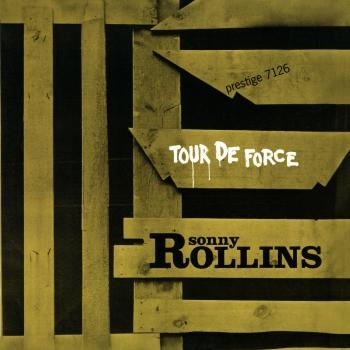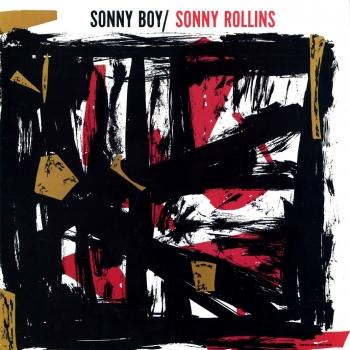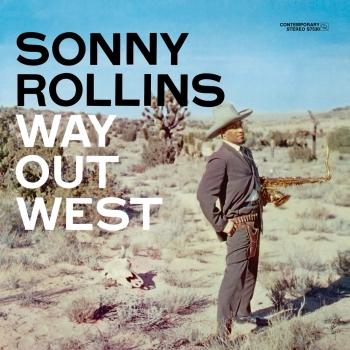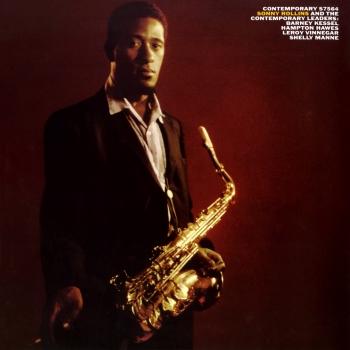
Road Shows, Vol. 3 Sonny Rollins
Album Info
Album Veröffentlichung:
2014
HRA-Veröffentlichung:
29.01.2015
Das Album enthält Albumcover
Entschuldigen Sie bitte!
Sehr geehrter HIGHRESAUDIO Besucher,
leider kann das Album zurzeit aufgrund von Länder- und Lizenzbeschränkungen nicht gekauft werden oder uns liegt der offizielle Veröffentlichungstermin für Ihr Land noch nicht vor. Wir aktualisieren unsere Veröffentlichungstermine ein- bis zweimal die Woche. Bitte schauen Sie ab und zu mal wieder rein.
Wir empfehlen Ihnen das Album auf Ihre Merkliste zu setzen.
Wir bedanken uns für Ihr Verständnis und Ihre Geduld.
Ihr, HIGHRESAUDIO
- 1 Biji 08:32
- 2 Someday I'll Find You 15:19
- 3 Patanjali 12:26
- 4 Solo Sonny 08:31
- 5 Why Was I Born 23:39
- 6 Don't Stop the Carnival 04:22
Info zu Road Shows, Vol. 3
Es gibt wahrlich nicht mehr viele aktive Jazzmusiker von diesem Schlage. Sonny Rollins ist ohne Wenn und Aber eine wandelnde Legende. Der US-amerikanische Tenorsaxophonist, der am 7. September dieses Jahres 84 Jahre alt wird, spielt seit nunmehr 70 Jahren sein angestammtes Instrument. Dabei hat Newk, so sein Spitzname, nie einen Hehl daraus gemacht, dass nicht das Studio, sondern die Bühne seine eigentliche künstlerische Heimat ist, auf der er sich nach Gusto frei entfalten kann. So gilt Rollins nicht von ungefähr als das nach wie vor größte Improvisationstalent des zeitgenössischen Jazz und als einer seiner erfindungsreichsten Komponisten.
Road Shows, Vol. 3, sein Debüt auf dem frisch wieder ins Leben gerufenen Label OKeh, folgt dem 2008 veröffentlichten Vol. 1 (zusammengestellt aus fast 30 Jahre umfassenden Liveaufnahmen des Archivs von dem Rollins-Fan Carl Smith) und dem 2010 erschienenen Volume 2 (bestehend aus Live-Takes desselben Jahres inklusive einiger seines Geburtstagskonzerts im New Yorker Beacon Theatre). Volume 3 umfasst Liveaufnahmen, die zwischen 2001 und 2012 entstanden, und zwar in Saitama, Japan; in Toulouse, Marseille und Marciac, Frankreich; sowie in St. Louis, Missouri. Zum Kern seiner Begleitband gehören der Pianist Stephen Scott, der Posaunist sowie der Bassist Bob Cranshaw, der Rollins seit fast 50 Jahren begleitet; Bobby Broom und Peter Bernstein wechseln sich an der Gitarre ab; Kobie Watkins, Perry Wilson, Steve Jordan und Victor Lewis am Schlagzeug; Kimati Dinizulu und Sammy Figueroa an den Percussions.
Die sechs Tracks (mit einer Gesamtspielzeit von über 70 Minuten) offenbaren all die Stärken und Besonderheiten, die Sonny Rollins über Jahrzehnte kultiviert hat und die ihm bis heute eine treue Anhängerschaft beschert haben. Seine bekannte selbstkritische Ader mag notorisch sein, aber bei all dem Perfektionismus, den Sonny gerne bekundet, bleibt er doch stets spontan und kreiert mit seinen profilierten Mitstreitern ein schillerndes Konglomerat aus Stimmungen, Grooves und Sentiment. Das gilt für seine grandiose Variation auf den Noël-Coward-Evergreen Someday I'll Find You ebenso wie für seine Eigenkompositionen "Beji" und Solo Sonny. Jerome Kerns Klassiker Why Was I Born?, aufgenommen wenige Tage nach 9/11, gerät zum fast 25-minütigen Opus magnum der Improvisationskunst - eine Ode an die Freiheit.
Sonny Rollins, der von Coleman Hawkins über Miles Davis bis Branford Marsalis schon mit Generationen von Jazzgrößen gespielt hat, wurde mit Grammys ausgezeichnet, mit dem Polar Music Prize, der National Medal of Arts (2010 überreicht von Barack Obama) und dem Kennedy-Preis. Honoriert worden ist ein Jahrhundertkünstler, über den der ehemalige US-Präsident Bill Clinton anlässlich von Road Shows Vol. 2 sagte: “Ich war fassungslos, wie gut er noch immer ist.” Dem ist auch angesichts von Volume 3 nichts mehr hinzuzufügen. Einfach hören und aus dem Staunen nicht mehr raus kommen. Play it again, Sonny.
„Was für ein Ton! Hart, fest, und dominant bläst Sonny Rollins sein Tenorsaxofon und verändert dabei die Klangfarbe nach Belieben. In sechs Live-Titeln aus den Jahren 2001 bis 2012 untermauert der 1930 geborene Gigant seine Ausnahmestellung.“ (Audio)
„Ihm geht es in diesen Live-Aufnahmen eben immer noch um die Substanz alles Sag- und Blasbaren zwischen Mundstück und Klappe!“ (FONO FORUM)
"Sonny Rollins ist ein Gigant des Tenorsaxofons und einer der größten Improvisatoren des Jazz. […] Bei diesen Auftritten aber entfachen [die Musiker] ein Feuer, aus dem der alles überragende Meister eine Energie bezieht, die ihn mit einem nicht enden wollenden Ideenfluss quasi um sein Leben spielen lässt. Und das ist einfach ganz große Klasse." (Rondo)
Sonny Rollins, tenor saxophone
Clifton Anderson, trombone
Stephen Scott, piano
Bobby Broom, guitar (on tracks 2, 4, 5)
Peter Bernstein, guitar (on track 3)
Bob Cranshaw, bass
Perry Wilson, drums (on track 1)
Kobie Watkins, drums (on tracks 3, 4, 6)
Steve Jordan, drums (on track 5)
Kimati Dinizulu, percussion (on track 1, 2, 5)
Sammy Figueroa, percussion (on track 3, 4, 6)
Sonny Rollins
will go down in history as not only the single most enduring tenor saxophonist of the bebop and hard bop era, but also the greatest contemporary jazz saxophonist of them all. His fluid and harmonically innovative ideas, effortless manner, and easily identifiable and accessible sound have influenced generations of performers, but have also fueled the notion that mainstream jazz music can be widely enjoyed, recognized, and proliferated. Born Theodore Walter Rollins in New York City on September 7, 1930, he had an older brother who played violin. At age nine he took up piano lessons but discontinued them, took up the alto saxophone in high school, and switched to tenor after high school, doing local engagements. In 1948 he recorded with vocalist Babs Gonzales, then Bud Powell and Fats Navarro, and his first composition, "Audubon," was recorded by J.J. Johnson. Soon thereafter, Rollins made the rounds quickly with groups led by Art Blakey, Tadd Dameron, Chicago drummer Ike Day, and Miles Davis in 1951, followed by his own recordings with Kenny Drew, Kenny Dorham, and Thelonious Monk.
In 1956 Rollins made his biggest move, joining the famous ensemble of Max Roach and Clifford Brown, then formed his own legendary pianoless trio with bassist Wilbur Ware or Donald Bailey and drummer Elvin Jones or Pete La Roca in 1957, doing recorded sessions at the Village Vanguard. Awards came from Down Beat and Playboy magazines, and recordings were done mainly for the Prestige and Riverside labels, but also for Verve, Blue Note, Columbia, and Contemporary Records, all coinciding with the steadily rising star of Rollins. Pivotal albums such as Tenor Madness (with John Coltrane), Saxophone Colossus (with longstanding partner Tommy Flanagan), and Way Out West (with Ray Brown and Shelly Manne), and collaborations with the Modern Jazz Quartet, Clark Terry, and Sonny Clark firmly established Rollins as a bona fide superstar. He also acquired the nickname "Newk" for his facial resemblance to Brooklyn/Los Angeles Dodgers pitcher Don Newcombe.
But between 1959 and 1961 he sought a less superficial, more spiritual path to the rat race society of the times, visiting Japan and India, studying yoga and Zen. He left the music business until 1962, when he returned with the groundbreaking and in many ways revolutionary recording The Bridge with guitarist Jim Hall for the RCA Victor/Bluebird label. Rollins struck up a working relationship with trumpeter Don Cherry; did a handful of innovative LPs for the RCA Victor, MGM/Metro Jazz, and Impulse! labels; did one record with his hero Coleman Hawkins; and left the scene again in 1968. By 1971 he came back with a renewed sense of vigor and pride, and put out a string of successful records for the Milestone label that bridged the gap between the contemporary and fusion jazz of the time, the most memorable being his live date from the 1974 Montreux Jazz Festival, The Cutting Edge. Merging jazz with calypso, light funk, and post-bop, the career of Rollins not only was revived, but thrived from then onward. He was a member of the touring Milestone Jazz Stars in 1978 with McCoy Tyner and Ron Carter, and gained momentum as a touring headliner and festival showstopper.
His finest Milestone recordings of the second half of his career include Easy Living, Don't Stop the Carnival, G-Man, Old Flames, Plus Three, Global Warming, This Is What I Do, and Without a Song: The 9/11 Concert. He has worked extensively with road and recording bands that have included such artists as electric bass guitarist Bob Cranshaw; trombonist Clifton Anderson; pianists Tommy Flanagan and Stephen Scott; keyboardist Mark Soskin; guitarists Bobby Broom and Jerome Harris; percussionist Kimati Dinizulu; and drummers Jack DeJohnette, Perry Wilson, Steve Jordan, and Al Foster. Rollins formed his own record label, Doxy, through which he issued the CD Sonny, Please in 2006. Well into his eighth decade of life, Rollins continued to perform worldwide. As a composer, he will always be known for three memorable melodies that have become standards and well-recognized tunes in the jazz canon -- "Oleo," "Airegin," and especially "St. Thomas." (Michael G. Nastos). Source: Blue Note Records.
Dieses Album enthält kein Booklet






















